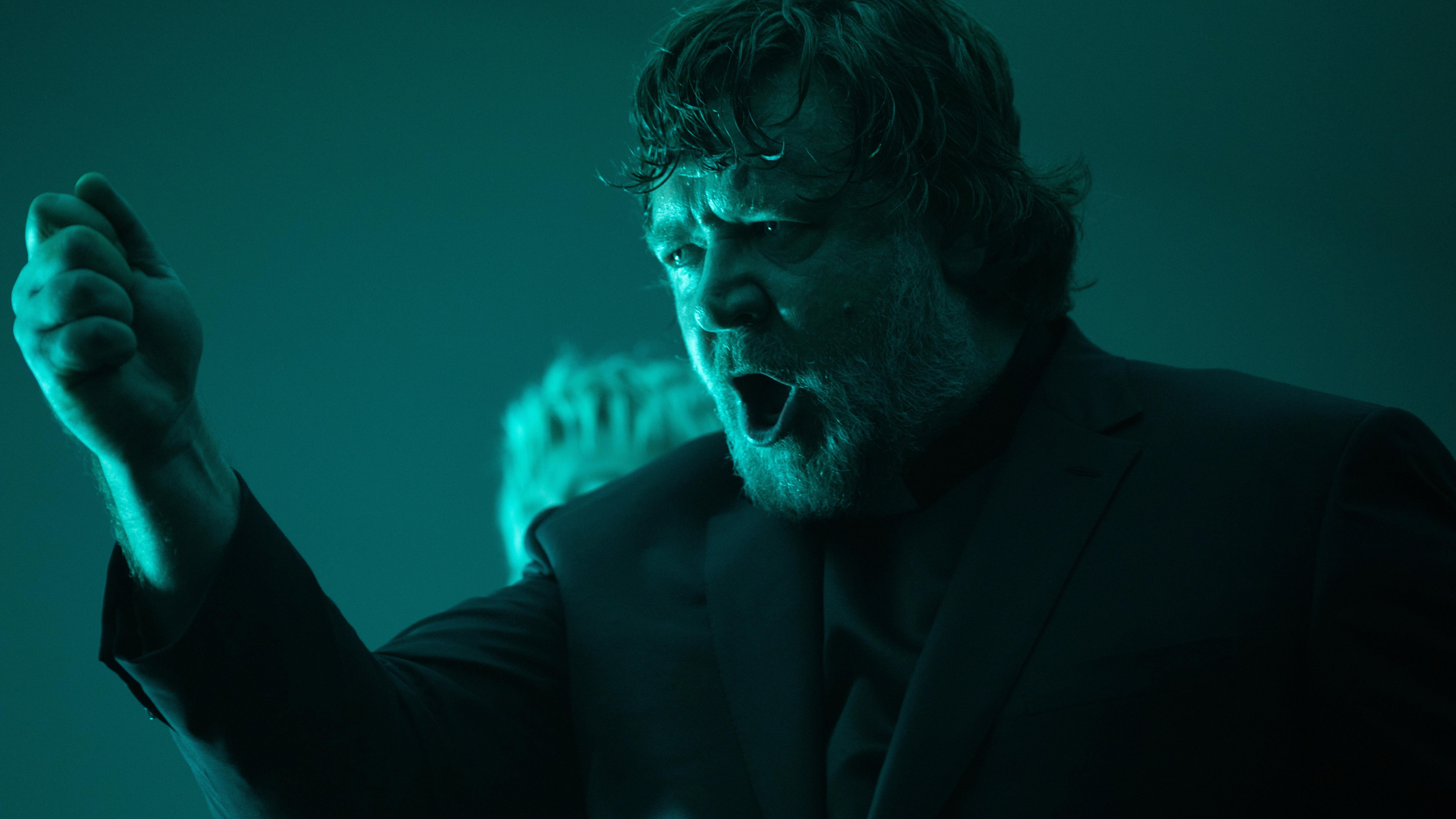The Exorcism review: Russell Crowe horror is possessed by too many ideas
Back in exorcism mode, Russell Crowe plays an actor playing an exorcist who can’t shake his demons

Photo: Vertical
There’s a killer premise (several, actually) and some good acting buried inside The Exorcism. Based, in part, on the urban legends and real-life tragedies surrounding the production of The Exorcist, the film boasts an eye-witness source. Director Joshua John Miller, son of Jason Miller, who played the dark-haired and tortured Father Karras in William Friedkin’s 1973 classic, weaponizes the cursed aura of supernatural sabotage that a generation has been hearing about on DVD special features and unsourced film trivia pages for decades. It’s a great idea to explore what would happen if an actor in a remake of The Exorcist got possessed. It’s a shame The Exorcism can only muster the most boring version of it.
For the first 30 minutes, Miller, who co-wrote the script with frequent collaborator M.A. Fortin, has some control over the premise. Miller and Fortin’s screenplay mixes story beats from William Peter Blatty’s Exorcist script, production folklore, and, presumably, Miller’s memories of his father’s work. The writers also take some influence from one of The Exorcism’s producers, patron saint of meta-horror Kevin Williamson. Making up for his absence on Scream 3, Williamson finally helped make a horror movie set within the production of a horror movie. Miller and Fortin aren’t strangers to post-modern genre pieces, either. Their script for the 2015 cult horror comedy Final Girls indicates a strong sense of—or at least interest in—genre mechanics. They just can’t pick the ones they like best.
The Exorcism opens promisingly enough. Miller offers a one-shot guided tour through the film’s most impressive feature: The three-story townhouse cross-section built for the in-film movie set. It’s an accurate recreation of the MacNeil home from The Exorcist, too. Off to the side of the house is the cold room, a reference to The Exorcist’s legendarily frigid bedroom set, where the climactic exorcism scene occurs. Crowe, too, is smart casting. No stranger to exorcisms, the former Pope’s Exorcist plays Tony, a once-prominent alcoholic A-lister on the downslope of his career. Harangued in the press for abandoning his only daughter and dying wife as she went through cancer treatment, Tony books a role in a pseudo remake of The Exorcist called “The Georgetown Project.” Now, living with his estranged daughter, Lee (Ryan Simpkins, who makes a tough role sympathetic), Tony’s problems intensify. Georgetown has its own William Friedkin surrogate: Peter (Adam Goldberg), the film’s tyrannical director. Peter tortures and belittles Tony as he hopes to use Tony’s personal demons for the movie. He gets more than he bargained for.
As soon as he arrives on set, Tony starts sneaking swigs of Jack Daniels. Providing quiet comfort on set are Lee’s love interest and the film’s possessed little girl, Blake (Chloe Bailey, who’s in this movie more than you’d expect), Tony’s co-star Joe (Sam Worthington, in this much less than you’d expect), and Father Connor (David Hyde Pierce, in the perfect amount), the in-universe Catholic advisor.
Miller knows what he’s doing here, and the movie works best when it’s gently mixing some of Friedkin’s flourishes with his own. Tony’s possession mirrors Reagan’s, making The Exorcism, in some ways, a meta remake itself. The slow zooms, crossfades, and jump cuts Miller employs all evoke the ‘70s horror aesthetic. Peter all but says the type of movie Miller aspires to make: A psychological drama wrapped inside a horror movie. To do so, the movie tosses in several potential metaphors that possession could attach to, including method acting and alcoholism, both of which track. But throughout the film’s inoffensive 95-minute runtime, Miller begins giving way to a more modern and overwhelmingly bluer cinematography. The more he does, the more generic things become.
The Exorcism had a near-five-year production, and it shows. Shot in 2019, The Exorcism wasn’t finished until 2023 due to COVID delays. The result is a movie at odds with itself, throwing out great ideas and then not doing much with them, as if the production ran out of time or money and had to pivot. Miller’s intricate set, which resembles The Life Aquatic’s Belafonte, never lives up to its promise. Most of the action takes place in Tony’s apartment, which, while friendly, is a dramatic step down. Crowe, who offers some subtle, repressed pain and surprising warmth, doesn’t play developing stages of possession; he’s basically in full-on “you’ll suck cocks in hell” mode halfway through. It doesn’t even occur to Miller and Fortin that a lunatic director making a movie about demonic possession might like the idea of a possessed actor. That’s not the kind of movie they want to make.
Instead, Miller focuses all his energy on possession as a metaphor for trauma and alcoholism. It’s an appropriate juxtaposition of possession and substance abuse. But Tony also represses some unsubtle church-based trauma, his public disgrace, his familial guilt, his memory issues, his medications, his sleepwalking, and his relationship with Lee. Any one or two of these would round out his character nicely, but the film can’t decide. By the climax, The Exorcism is buried in plot points that obscure whatever the power of Christ is compelling us to do.
So many ideas possess The Exorcism. Too many. Though Miller manages a couple of jump scares in his movie, what makes The Exorcist so scary is how real Friedkin played it. Here, Tony’s possession has no ambiguity and, therefore, not much suspense either. For some people, the scariest part of the classic movie is Regan’s medical examination, not the pea soup. The Exorcism, for all its talk of alcoholism, never elevates its melodrama to a place of reality. It’s not a truly bad movie, but it won’t make your head spin.